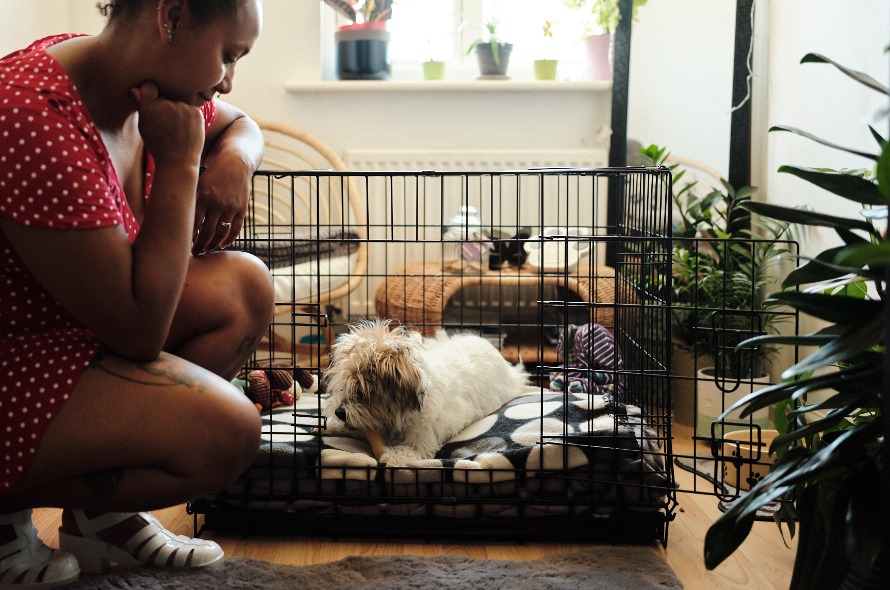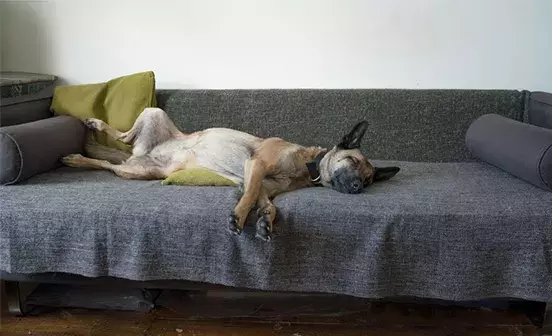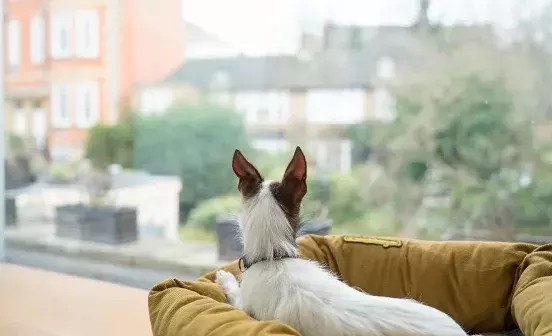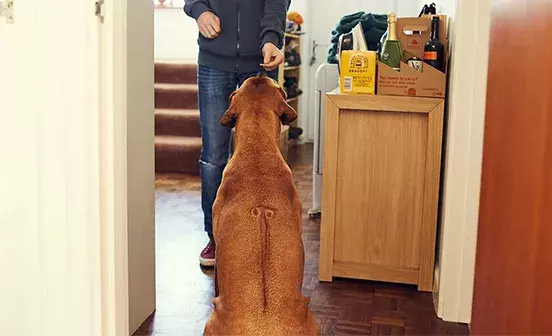Crate training is the process of introducing a puppy or dog to an indoor dog kennel or dog crate, with a view to it becoming a safe, familiar space for them.

Typically, a dog crate is an enclosed space made of a thick wire or fabric. Dog crates will have either one or two doors and come in different sizes. Wire crates will have slide bolt latches for security, and fabric ones will have zips.
Choosing a dog crate
Your choice of dog crate will depend on what you will be using it for. For example, for travel or as somewhere for your dog to stay. Fabric dog crates are easier to move around and set up in different places as they are lightweight. However, if you’re using your dog crate in a car, a wire/metal one will be more stable and prevents other items in the car squashing against your dog.
The size of the crate is also important to consider. The crate must be large enough for your dog to stand up, turn around and lie down comfortably, with enough space for bedding.
Watch our step by step guide on crate training your dog
Why crate train your puppy or dog
Crate training your dog can help foster a sense of security and give them a safe space that is their own. Building this association can mean that the presence of the crate can help them stay calm in new or stressful environments. Sometimes just giving your dog the option to go somewhere that they feel safe and comfortable can help them to relax.
Benefits of crate training
- Gives your dog a place to go when tired, nervous or stressed.
- Can help with toilet training – dogs naturally tend to avoid making a mess where they sleep.
- Helps to settle dogs into new environments.
- A safe place for your puppy/dog to go when not supervised.
- If the crate is suitable for travel this can make travelling with your dog much easier.
How to crate train a puppy or dog
First, place the dog crate in a room with the door of the crate secured open. Do this while your dog is safely in another room so as not to spook them. Put the crate in an area away from direct sunlight and make sure that there is no clutter on the floor that may distract your dog. It’s a good idea to put your dog’s bed or bedding inside the crate to make it more appealing and comfortable for them.
Next, let the dog into the room and allow them to investigate on their own terms. If the dog shows interest in the crate, reward them with treats. If the dog goes inside the crate, reward them again but do not shut them in yet as this may upset them. Keep the door fixed open to allow them the option to enter and exit freely. After this initial introduction you can make the crate a more appealing place by placing treats and toys inside or even feeding them their meals in there.
Once your dog is happy settling inside the open crate, gently close the door but do not lock it. Repeat this for several days, ensuring they remain relaxed throughout. It’s worth providing a longer lasting chew or a stuffed Kong inside the crate to increase the time it takes them to consume their reward. To increase their sense of security, cover the crate in a thick blanket or towel so that all sides are covered apart from the door.
When your dog is relaxed and happy to use the crate, you can begin to lock the door for short periods of time while you are still in the room. Gradually build up to locking the door and leaving the room for short periods of time, and then eventually the house. Remember that your dog should always have access to water – you can get special bowls for metal crates that hook onto the side or non-spill water bowls that work well in fabric crates.
Click below to download these steps as a handy advice sheet and use it as a reminder to train regularly:



